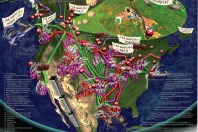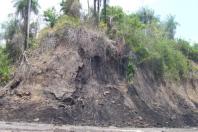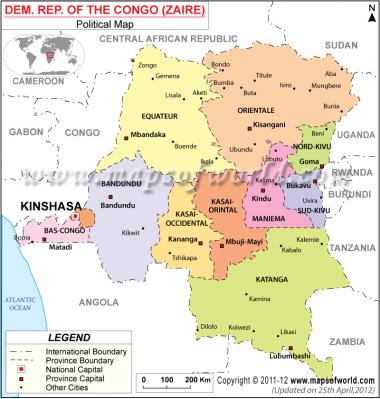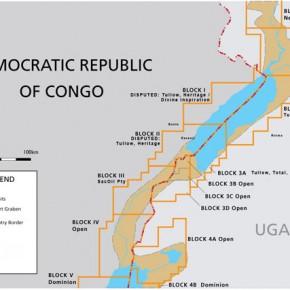Democratic Republic of the Congo (Kinshasa)
The plot:
Like so many other valuable resources sought by rich countries, the Democratic Republic of Congo contains significant tar sands and oil shale reserves. Some of the deposits that currently are untapped are in disputed and unstable areas in the east of the country near the borders with Rwanda, Uganda, Burundi and Tanzania. Other deposits in the west may cross over into Angolan or Congo-Brazzaville territory.
The details:
Multiple deposits of tar sands in the country, most notable are the large bitumen deposits in the Tanganyika Graben region near Lake Tanganyika (that comprises the border with Tanzania), as well as on the western Atlantic Coast near Cabinda and the Republic of Congo (Brazzaville). The Congo basin (following the Congo River) is reported to have vast oil shale deposits, possibly double the size of in-place reserves contained within Morocco.
There are estimates of 100 bn bbl of oil shale in place throughout the DRC. Over 300 mn bbl of tar sands in place, with estimates of over 30 mn bbl recoverable reserves of synthetic oil from bitumen. Recoverable oil from shale not estimated. Proper exploration of the predicted oil rich east of the country has been hampered by decades of “instability” and war on the ground.
Mining of tar sands in the east of the country has taken place on a small scale for decades to produce asphalt for road construction. No extraction plans for either oil shale or tar sands bitumen currently public.
ENI of Italy signed an agreement with the government in Kinshasa in 2009 to explore bitumen, kerogen and other unconventional oil deposits throughout the DRC.
The eastern portions of the country already have mining that is often implicated in the continuation of the worst war zone on earth since the end of WWII. The DR Congo has had multiple armed groups, militias and other insurgencies mostly operating in the eastern regions along the borders with Uganda, Rwanda and Burundi since the overthrow of the Mobutu Sese Seko dictatorship in 1997.
Mining for resources such as gold, diamonds, coltan, copper and much else have fed (often illegally) the various sides of a conflict that has at times engulfed much of Africa. With a death toll of over 5 million and recognized as the most dangerous place to be a woman in the world, the DRC has seen resource extraction lead to human rights tragedy on a scale unparalleled on earth for decades.




